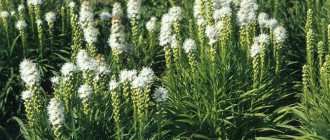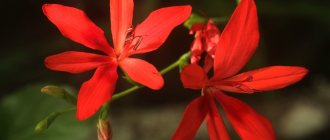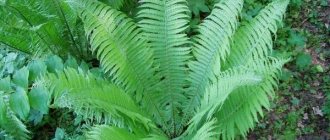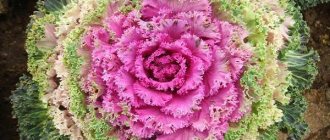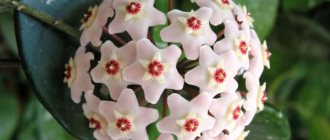Description of the species
Seedlings can be found on sale under another name - curly willow. These are ornamental plants with characteristic sinuous, strongly curved (curly, like curls) branches and slightly spiral-shaped narrow leaves. The height depends on the variety and ranges from 4-13 m. All varieties lend themselves well to crown molding using pruning. The twisting willow tree can easily be made into a garden bonsai.
The root system is strong and spreading, the tree adheres firmly to the soil, so it can be planted on slopes to prevent soil erosion. The depth of occurrence is low. Because of this, you can loosen the soil around the trunk to a depth of no more than 10 cm.
In Russia, curly willow is represented by two varieties: Ural (aka Sverdlovskaya sinuous - lat. Sverdlovskaja Isvilistaja) and Matsudana (lat. Salix matsudana). They differ in size and appearance, but only Matsudana is capable of blooming - its flowering period occurs in May. Flowers are not the main decoration of the willow; it attracts attention with its graceful drooping branches and leaves that seem to be screwed into a spiral.
Varieties
The variety of curly willow varieties is limited to two areas of selection. One of them is the Sverdlovsk line, which includes varieties that can winter in the conditions of central Russia. The second direction is Matsuda willow, its varieties do not tolerate frost.
Sverdlovskaya winding
For the first time, Sverdlovsk twisting (Ural) willow was obtained in the Botanical Garden of the Ural Branch of the Russian Academy of Sciences in Sverdlovsk (now Yekaterinburg). The total height of the tree does not exceed 4 m. The crown of medium density is spherical or broadly oval. Branches covered with red-brown bark are drooping and very twisting. The variety is not flowering. Reproduction occurs only by cuttings, of which on average 7 out of 10 take root.
In nurseries you can find seedlings labeled “Sverdlovskaya Izvilistaya 2” or “Sverdlovskaya Izvilistaya 3” - these are the next generations of selection. In the second number, the height of the tree reaches 12 m, the leaf has pubescence, and the shape of the crown with drooping shoots is pyramidal. The third number has a tree height of 5 m, and not only the shoots are tortuous, but also the leaves themselves.
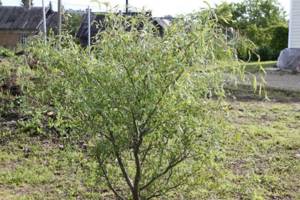
Several dwarf cultivars have been bred under numbers 476, 576 and 676, up to 2.5 m high. Their branches are distinguished by the fact that the shade of the bark is not reddish-brown, like its predecessors, but light olive. In addition to their compactness, these varieties are distinguished by their increased frost resistance. Externally, willows look more graceful, thanks to their low growth and thinner branches.
Iwa Matsuda
Willow Matsudana (lat. Salix matsudana) - it is easy to distinguish from the varieties of the Ural selection, since this plant is a flowering one. The height of the shrub or tree form varies widely from 3.5 to 13 m. The branches of the plant are brittle. The crown is formed by straight and drooping shoots, covered with olive or yellowish bark, which turns brown over time. Old branches tend to become exposed.
The narrow leaves, pointed at the ends, are 5-10 cm long and only 1-1.5 cm wide. The top of the leaf blade is bright green, and the underside is bluish-whitish. Young foliage is silky-hairy on the underside, and then becomes bare. The petioles are short - on average 2-8 mm long.
In May, the trees are covered with creamy yellow female and male flowers shaped like catkins. The average length of a flower is 1-1.5 cm, with male ones differing from female ones in being thicker. After ripening, the fruits look like capsules filled with numerous small hairy seeds.
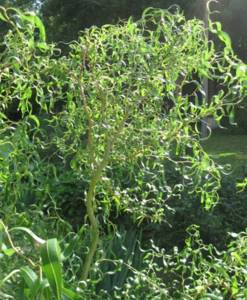
Matsuda willow is available for sale in two varieties - Tortuosa and Erythroflexuosa. Besides both being forms of Matsuda willow, they have quite a few differences. Willow Tortuosa is only 3.5 m high, and the shoots are drooping, but straight; only the leaves curl in a spiral. The drawback is very low frost resistance, so the tree grows only in the south of Russia. Willow Erythroflexuosa grows slowly, is prone to self-thickening, and requires annual formative pruning. The total height of the tree is within 4-6 m. This variety has even lower frost resistance; it can only grow at positive temperatures.
What types of willow are there?
Weeping willow in landscape design is an unusual solution. Among the varieties of willows you can find both full-fledged trees with a powerful trunk and ornamental shrubs. The varieties differ because they are adapted to live in different climatic conditions:
- White willow is a tree whose height can reach 25 m. The lifespan of the variety is about 100 years. White willow is called because its leaves are light-colored on the underside. The plant feels good on the banks of rivers and reservoirs; it can also be planted near an artificial pond.
- Weeping white willow also has an unusual color, but differs in the shape of its crown. Its branches are long, flexible, lowered to the ground. The tree bark has a rich yellow tint.
- Babylonian willow also has a weeping crown. It can reach a height of 15 m or more, and its lifespan is about 100 years. The leaves are light, but without a silvery tint. The tree grows quickly and reaches its peak. The most comfortable conditions for his life are well-lit shores of reservoirs.
- Shaggy dwarf willow is a shrub that does not grow higher than 2 meters. Its leaves are different from those that grow on the usual weeping willow - rounded and covered with light down. This plant can form a crown of an unusual shape, since the shoots are strong and grow upward. The shrub easily tolerates winter frosts and prefers to grow in moist soil.
- Goat willow is a distinctive tree that is often planted in parks and recreation areas. The shoots are directed downwards, and small round leaves grow on them. Flowering occurs in spring, during which time the tree emits a sweet honey aroma.
There are other varieties of trees such as weeping willow. They can be completely different in appearance, but all belong to the willow family. These are not only large trees with branches falling to the ground, but also small bushes with unusual leaf shapes. With proper care and watering, willow grows quickly, and by pruning you can form a crown of the desired shape on it.
Weeping white willow
Weeping white willow is a frost-resistant large tree reaching 25 meters in height. Young trees have a narrow crown and over time it “blooms” and becomes spreading. The main shoots grow straight up, but the shoots located on the sides hang down. Willow leaves, at first, have a silvery color, and over time they become a little greenish. It is photophilous, but can also tolerate being in the shade.
Yellow weeping willow
Yellow willow is a tree that grows quite quickly and mainly in sunny places. The leaves are medium in size - approximately 12 cm. It tolerates winter well and can grow at temperatures of -40. The shoots are thin and flexible, have a light color, which is why willow has this name. Not picky about soil.
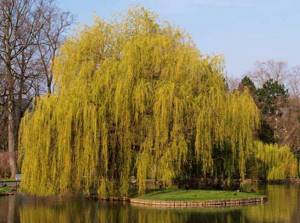
Willow whole leaf
Whole-leaved willow is a decorative dwarf species. It has a beautiful appearance, so it is often used when decorating gardens. All-leaved willow is considered a low-growing variety, since its size barely reaches 3 m. During flowering, it has a smell like hyacinth. Begins to bloom at the end of May. Looks beautiful both alone and together with other plants.
Yellowbark willow
Yellowbark willow (golden) is a large plant that reaches 20 m in length. It is not picky about soil and can grow even in infertile soil. It grows best in summer, but also tolerates winter calmly.
Dewy willow
Dewy willow is also called Shelyuga Siberian. The tree grows to medium size, approximately 8 - 12 meters. Grows along river banks. The leaves are green, yellowish inside. The branches are dark brown in color and may have a coating.
Planting and care
To plant a willow seedling, choose a site on the shore of a reservoir or a small hill, where the soil is both loose and fertile. All varieties of climbing willows need plenty of watering. The root system will not be damaged by a short flood, but drought can cause serious damage.
Care consists mainly of formative pruning. They are carried out in late autumn or early spring before sap flow begins. Shaping the crown of a tortuous willow involves removing branches that cause thickening. Secateurs are used to cut off frozen, dried, broken shoots that spoil the appearance of the tree.
The plant is demanding in terms of lighting; planting it near tall trees with a dense crown is not recommended. Willow looks best in an area free from other trees, surrounded by green grass or low-growing ground covers.
Willow planting: - planting rules - planting patterns
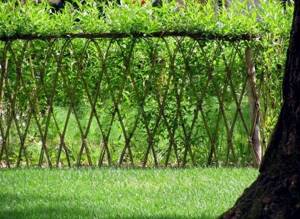
There are several simple rules for effective planting of willows:
- The tree grows well in loams when fertilized with organic matter. It tolerates the proximity of groundwater well, and some species begin to fight faster.
- Seedlings take root well if their root system is left closed.
- To plant a seedling, you need to dig a square hole with sides 50 cm and depth 40 cm.
- When preparing a hole for planting, fill it about a third with soil mixture. It should consist of soil and humus.
- After this, the seedling is placed in the hole and covered with earth.
- After planting, the tree must be watered abundantly.
Willow planting patterns are essential for creating a beautiful hedge, arbor or arch. To do this, trees are first planted in certain places, and then young and pliable rods are bent. As they grow, they get used to growing in a given direction and after a few years independently maintain the shape given to them. This allows you to create real sculptures from willow.
Use in landscape design
The decorative appearance of willows is attractive in itself, which is why they are used in single and group plantings. Traditional use is to decorate ponds and streams. The branches drooping to the ground harmoniously complement the landscape. If there is no pond on the site, then recreation areas and lawns are chosen for planting, since the spreading crown provides excellent shade and looks advantageous against the backdrop of lush green grass.
It was customary in our country to plant willows for decorative purposes many centuries ago. Today gardeners have the opportunity to purchase a seedling with a very graceful curly crown - a twisting willow. Long life, unpretentiousness and vitality are its most important advantages, along with its unusual beauty.
Weeping willow care

Willow does not require special care, but in any case you will have to follow several recommendations:
- In the first year after planting in open ground, the tree must be watered abundantly. 20 - 50 liters of water once every two weeks or once a week during dry periods will be sufficient.
- Some types of willows require pruning; this procedure must be performed a couple of times a season: in spring and mid-summer.
- Top dressing should consist of complex fertilizers and superphosphate applied 1 – 2 times a season at the end of August.
- If in rainy years black spots begin to appear on the leaves, the tree can be sprayed with copper oxychloride to give it its original appearance.
- In autumn, fallen leaves must be removed from the site.
- All grafted trees must be cleared of wild growth.



